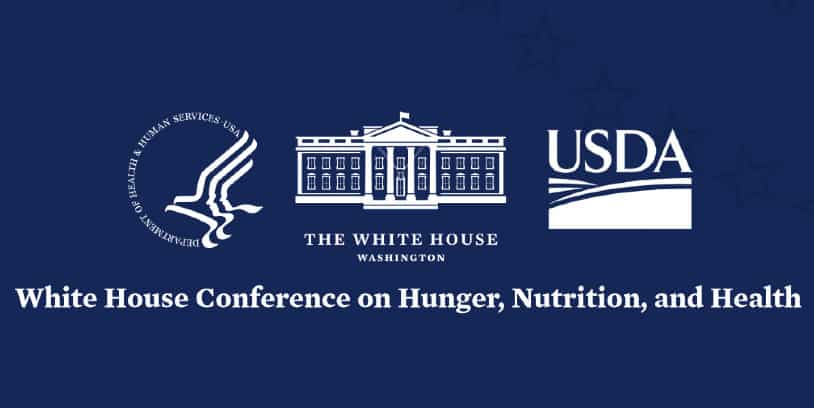The FMI-Food Industry Association announced that a group of 17 food industry organizations transmitted to the White House a report entitled, Food Industry Contributions, Recommendations & Commitments, summarizing how the food industry serves as solution-providers to support Americans in meeting their dietary needs and health goals, and detailing their collective contributions to and policy recommendations for the White House Conference on Hunger, Nutrition, and Health.
On Wednesday, September 28, the Biden-Harris Administration will host the White House Conference in Washington, D.C., to frame an action plan to improve national nutrition-related health outcomes and increase access to food for underserved communities.
While the industry has an important role to play, it cannot solve the nation’s food issues alone, said the FMI in a press release.
“As representatives of growers, manufacturers, retailers, and restaurants in the food industry, we fully support the White House Conference on Hunger, Nutrition and Health goals to improve national nutrition-related health outcomes and increase food access for underserved communities,” stated the FMI.
“As food security and nutrition-centric health empowerment are perennial challenges for the country, the food industry recognizes an ongoing need for private sector engagement and collaboration through industry-led efforts with the Biden-Harris administration, federal government, public advocates, academia, and other stakeholders. That is why the food industry commits to work together with these stakeholders to develop solutions for ending hunger, improving nutrition, and reducing diet-related diseases in America,” the FMI added.
Related Article: USDA to Invest up to $300 million in New Organic Transition Initiative
The White House Conference will build on five pillars as the foundation for a national strategy to address the pressing problems of hunger, nutrition, and health in the United States.
- Improve food access and affordability: End hunger by making it easier for everyone — including urban, suburban, rural, and Tribal communities — to access and afford food. For example, expand eligibility for and increase participation in food assistance programs and improve transportation to places where food is available.
- Integrate nutrition and health: Prioritize the role of nutrition and food security in overall health, including disease prevention and management, and ensure that our health care system addresses the nutrition needs of all people.
- Empower all consumers to make and have access to healthy choices: Foster environments that enable all people to quickly make informed, healthy choices, increase access to healthy food, encourage healthy workplace and school policies, and invest in public messaging and education campaigns that are culturally appropriate and resonate with specific communities.
- Support physical activity for all: Make it easier for people to be more physically active (in part by ensuring that everyone has access to safe places to be active), increase awareness of the benefits of physical activity, and conduct research on and measure physical activity.
- Enhance nutrition and food security research: Improve nutrition metrics, data collection, and research to inform nutrition and food security policy, particularly on issues of equity, access, and disparities.
According to the FMI, the report from the 17 food organizations demonstrates how the food industry is rallying behind a priority set of recommended government actions, which they call Food Industry Defined Government Actions to Address Hunger, Nutrition and Health, organized around the White House Conference Pillars 1-3 and 5.
For example, under Pillar 3: Empower all consumers to make and have access to healthy choices, they recommend that the federal government incentivize and promote participation in government-led and/or private sector-led voluntary initiatives that aim to increase access to healthy foods.
Also, under Pillar 1: Improve food access and affordability, they recommend that the federal government work with the food industry increase food access points in communities.
Additionally, to spur meaningful dialogue at the White House Conference and demonstrate recognition of collective industry responsibility, the report offers an important set of industry commitments that are separate from the individual company and organizational commitments. Jointly, they will:
- Continue to maintain and improve the resiliency and accessibility of the U.S. food supply.
- Continue to innovate and renovate to expand the nutritional quality of food and beverages in the marketplace.
- Continue to forge public-private partnerships, leveraging best practices in communications and marketing, educating consumers on the interconnectedness of health and nutrition, and providing guidance on healthy food and beverage choices.
- Review and understand the National Strategy, and then work with the White House to define and operationalize activities with measurable outcomes in service of the National Strategy.
- In collaboration with the federal government, address challenges and barriers to successfully executing the National Strategy and improving hunger, nutrition, and health in the U.S.
- In collaboration with the federal government, define, prioritize, and identify areas for industry contributions to a national nutrition and food security research agenda that supports White House Conference goals.


